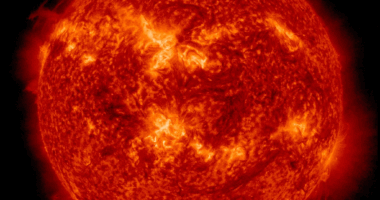A CHINESE rocket part is falling back to Earth in an uncontrolled descent – and scientists don’t know where it will land.
Debris from the huge booster could reach our planet early next week, according to US Space Command, which is tracking its trajectory.
It has prompted concerns that the junk could hit a city during its fiery return, though the chances of this happening are slim.
The 20-ton core stage was jettisoned during a mission to deliver a new module to China’s space station.
It’s the third time that the country’s space agency has permitted a potentially deadly uncontrolled descent in as many years.
The 23-ton Long March 5B rocket which carried the Wentian laboratory module took off from Hainan Island on Sunday.


The module successfully docked with China’s orbital outpost on Monday.
After its separation from the station, the rocket began to orbit the Earth in an irregular trajectory as it slowly lost altitude.
That makes any predictions about where it will re-enter the atmosphere or fall back to the ground nearly impossible.
It could end up breaking apart upon entry, with only smaller pieces of debris reaching Earth.
Most read in Tech
Even if the rocket falls from the sky mostly intact, there is a good chance it will splash down into the ocean, which covers 70 per cent of Earth’s surface.
Scientists won’t have an accurate idea of where the booster will land until within a few hours of reentry.
“Unfortunately we can’t predict when or where [it will impact],” Dr Jonathan McDowell, an astronomer at the Harvard-Smithsonian Center for Astrophysics who is tracking the object, told Gizmodo.
“Such a large rocket stage should not be left in orbit to make an uncontrolled reentry; the risk to the public is not huge, but it is larger than I am comfortable with.”
Launches carried out by Nasa, SpaceX and Russia’s Roscosmos dispose of their rocket upper stages using controlled reentries.
The junk is directed into Earth’s atmosphere to ensure that it breaks up over an uninhabited, remote region of the Pacific Ocean.
China’s enormous Long March 5B rocket, however, is not capable of controlled reentry – a process that requires the booster to restart its engines following the completion of its primary mission.
It’s thought that later models being developed by China’s National Space Agency will be capable of controlled reentries.
Until then, Beijing will continue to allow rocket parts the size of three firetrucks stacked end-to-end to drift back to Earth.
Dr McDowell said that “on average”, American launches “do a rather better job of upper stage disposal and China on average a worse one.”
The chances of any debris hitting a person are around one in a billion. For comparison, the probability of someone being hit by lightning in their lifetime is one in 12,000.
It’s not the first time that China has allowed one of its rockets to tumble back to our planet.
In May 2021, a 21-ton piece of a Long March 5b crash-landed in the Indian Ocean.
At roughly 30 metres (100ft) long, the booster stage was among the biggest pieces of manmade debris ever to fall from space.
Scientists had initially feared the hunk of junk was destined for an explosive reentry over cities including New York and Madrid.
In September 2020, a Chinese rocket booster exploded after landing on a town in the country’s Shaanxi province.
And in May that year, another Long March 5B rocket slammed through the atmosphere, partially burning up on its descent.


Fortunately, debris from the disintegrating booster largely fell into the Atlantic Ocean – though some landed in West Africa.
According to the South China Morning Post, pieces of metal showered inhabited villages in the Ivory Coast, though no injuries were reported.
Find out more about science
Want to know more about the weird and wonderful world of science? From the Moon to the human body, we have you covered…
We pay for your stories! Do you have a story for The Sun Online Tech & Science team? Email us at [email protected]
This post first appeared on Thesun.co.uk








